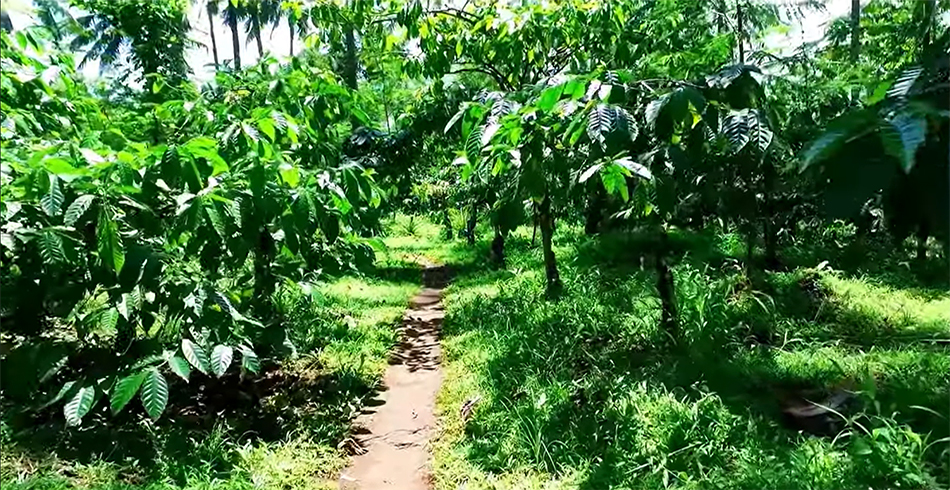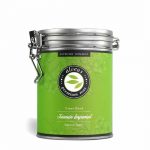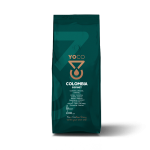Coffee is one of the most traded commodities worldwide, with millions of people relying on it as part of their daily routine. Although coffee is grown in many tropical regions, a few countries dominate global production. These countries benefit from the ideal conditions for coffee farming, such as the right combination of climate, altitude, and soil composition. The coffee from these regions has its own distinct flavor profile, shaped by the local environment and traditional farming methods.
Understanding where coffee comes from can help consumers appreciate the variations in taste and quality that different regions produce. The following is an overview of the leading coffee-producing countries and the characteristics of their coffee, from flavor profiles to farming practices.
1. Brazil
Brazil has been the largest producer of coffee for over a century, accounting for about one-third of the world’s supply. The scale of production in Brazil is unmatched, with thousands of coffee farms spread across multiple regions, covering over 10,000 square miles. Brazil’s coffee-growing areas benefit from a variety of microclimates, providing flexibility in the types of beans the country can produce.

The majority of Brazilian coffee is mild in flavor, with low acidity. Common flavor notes include chocolate, nuts, and caramel, making it a popular choice for blends and espresso. The country’s mechanized approach to farming ensures consistent production levels year after year, allowing for large quantities of both high-quality Arabica beans and more commercial Robusta varieties. Brazil’s diversity of growing regions contributes to its ability to produce coffee suitable for various markets, from specialty coffees to bulk commercial production.
2. Vietnam
Vietnam is the second-largest coffee producer in the world, with a primary focus on Robusta beans. Robusta coffee, which is known for its stronger and more bitter flavor compared to Arabica, is a key ingredient in instant coffee and certain espresso blends. Vietnam’s Central Highlands, with their rich soil and tropical climate, provide ideal conditions for high-yield coffee production.
Vietnamese coffee tends to have a full body with a bold, earthy flavor and pronounced bitterness. The country is one of the main suppliers of Robusta beans globally, and these beans are often used in blends where a stronger, more robust flavor is needed. In recent years, Vietnam has also started increasing its production of Arabica beans, aiming to tap into the specialty coffee market, though Robusta remains its primary export.
3. Colombia
Colombia is renowned for its high-quality Arabica coffee, and it consistently ranks as one of the top three coffee producers in the world. Coffee in Colombia is grown mainly in mountainous regions, where high altitudes and rich volcanic soil contribute to the beans’ distinct flavor profiles. Colombian coffee is typically characterized by its balanced acidity and smooth, mild flavor, with common tasting notes of caramel, nuts, and fruit.
Colombian coffee production is largely centered in the country’s Coffee Axis region, where the combination of geography and traditional farming methods results in consistent quality. The country’s commitment to sustainable and environmentally friendly practices has helped maintain its reputation for producing some of the best Arabica beans available on the global market.
4. Indonesia
Indonesia is a significant coffee producer, known for its robust and full-bodied coffee varieties. The country’s most famous coffee-growing regions include Sumatra, Java, and Sulawesi, each of which produces beans with unique flavor profiles. Indonesian coffee is typically characterized by its earthy, rich flavors, often with low acidity and notes of spices, tobacco, and chocolate.
One of the key features of Indonesian coffee production is the wet-hulled processing method, which contributes to the beans’ heavy body and syrupy texture. This method, along with the country’s tropical climate and volcanic soil, gives Indonesian coffee its distinct flavor that stands out on the global market. Both Arabica and Robusta beans are grown in Indonesia, with a significant portion used in blends to add depth and complexity.

5. Ethiopia
Ethiopia is considered the birthplace of coffee and remains one of the top producers of high-quality Arabica beans. Ethiopian coffee is known for its complex flavor profiles, which often include bright acidity, fruity and floral notes, and a rich aroma. Coffee is an integral part of Ethiopian culture, with traditional coffee ceremonies reflecting its deep-rooted significance in daily life.
The country’s coffee-growing regions, such as Sidamo, Yirgacheffe, and Harrar, are famous for producing beans with distinct characteristics. Ethiopian coffees can vary greatly depending on the processing method, with wet-processed beans typically offering a cleaner, more delicate flavor, while dry-processed beans are often fruitier and fuller-bodied. The diversity of Ethiopian coffee makes it highly sought after in specialty coffee markets worldwide.
6. Honduras
Honduras has quickly become one of the top coffee-producing countries in the world, particularly in the specialty coffee market. Coffee is an essential part of the economy in Honduras, and its coffee beans are known for their sweet, fruity flavors, balanced body, and acidity.
The country’s diverse microclimates allow for a wide variety of coffee flavors, ranging from tropical fruit notes to cocoa and caramel. Coffee from Honduras is often favored by specialty roasters who seek unique, high-quality beans. In recent years, Honduras has invested heavily in improving the quality of its coffee, which has helped it gain a solid reputation on the international stage.
7. Peru
Peru has earned a solid reputation in the specialty coffee market, particularly for its organic and fair-trade coffees. The country’s coffee-growing regions are located high in the Andes mountains, where the altitude and climate contribute to the beans’ bright acidity and fruity notes.
Peruvian coffee often has floral and citrusy flavors, with a light body and clean finish. The combination of high-quality beans and environmentally friendly farming practices has helped Peru gain recognition as a top producer of premium, ethically sourced coffee.
8. Guatemala
Guatemala is another key player in the coffee world, known for its rich, full-bodied coffee with chocolate and spice notes. The country’s coffee-growing regions, such as Antigua, Huehuetenango, and Atitlán, are located at high altitudes, where the volcanic soil and cool temperatures create ideal conditions for Arabica beans.
Guatemalan coffee is well-balanced, with bright acidity and a rich flavor profile that often includes notes of cocoa, toffee, and nuts. It’s a popular choice for coffee enthusiasts who appreciate a complex cup with a distinctive character.
Conclusion
From the creamy, balanced coffees of Brazil to the complex, fruity beans of Ethiopia, the world’s top coffee-producing countries offer a wide range of flavors and experiences. Brazil, Vietnam, Colombia, Indonesia, and Ethiopia remain the key players in the global coffee trade, but countries like Honduras, Peru, and Guatemala are making their mark with high-quality, specialty coffees. Each region’s unique environment, farming practices, and traditions contribute to the distinctive flavors of their coffee, making every cup a journey into the heart of these coffee-growing nations.
For coffee lovers, understanding where your coffee comes from adds another layer of appreciation to the experience. Whether you prefer a smooth Brazilian blend or an intense Vietnamese Robusta, the world’s coffee producers continue to bring rich, diverse flavors to your cup.




